Pay attention to these points before apple bagging
Apple bagging should be based on a variety of factors to determine the exact bagging time. Generally, early red varieties should be bagged about 30 days after flowering, that is, the end of May and the beginning of June; for varieties with heavy physiological fruit drop, the bag should be bagged after the physiological fruit drop ; For late-maturing red varieties, it is advisable to start bagging 35 to 40 days after flowering, that is, bagging from the beginning of June. So, what should we pay attention to before Apple bagging?
Before bagging, spray medicine in time, pay attention to protecting the leaf bagging, which has the effect of preventing pests, but some pests have infested the fruit before bagging, if they are not eliminated, the infected pests will be in the bag Continue to harm the fruit and lose the significance of bagging.
Note that increasing the application of organic fertilizers and phosphorus and potassium fertilizers should increase the amount of organic fertilizers applied, and more high-quality chicken manure is used as organic fertilizer in production, and more than 6000 kg per mu is applied. Before conditional orchard topdressing, foliar analysis or soil nutrition diagnosis should be carried out to determine a reasonable number and proportion of topdressing. At the same time, according to the different stages of fruit tree growth and development, balanced fertilization, pay attention to nitrogen and phosphorus, potassium, especially in the middle and late stages of adding potassium and phosphorus fertilizers, combined with spraying foliar fertilizer on the tree, is conducive to fruit coloring and anti-sunburn.
Note that when bagging technology is required to regulate fruit bagging, non-standard operating techniques will result in a low rate of bagged fruit. Strictly follow the bagging technical regulations, and seal tightly when bagging, to prevent pests from entering the bag to multiply, and to prevent the liquid medicine and rain from entering the bag to contaminate the fruit surface. When bagging, do not keep the fruit bag close to the young fruit to avoid rough fruit surface and fruit rust.
Pay attention to the prevention and treatment of Kangshi mealybugs. Kang's mealybugs mostly gather in the fruit concaves to suck the fruit juice, causing small black spots, and they are mostly covered with white wax powder; they can also be drilled into the bag through the air hole and the gap of the bag mouth. It occurs lightly within 1 to 2 years of bagging, but the insect fruit rate can reach more than 40% after bagging year after bagging. Before bagging, spray medicine should be used to kill K. coccinei, and pay attention to tighten the bag mouth when bagging.
Note that the effect of calcium supplementation on the quality of apples is far more important than elements such as nitrogen, phosphorus, potassium, and magnesium. Therefore, calcium element plays a decisive role in the quality of bagged apples. Before and after bagging, fruit trees should be sprayed with calcium fertilizer several times in combination with spraying to reduce the occurrence of bitter acne disease and hydrocardiasis.
Pay attention to choose the apples with high-end double-layer paper bags, the coloring is bright, the skin is tender and the price is high. But not all orchards are suitable for high-end paper bags. High-quality orchards with an altitude above 600 meters, orchards with high soil organic matter content, well-managed and healthy trees, should be set with high-end double-layer paper bags. For sub-optimal areas of apples, especially orchards with poor management and serious pests and diseases, in addition to strengthened management, it is suitable to set good quality plastic bags, which cost less and have a greater effect, and can also effectively increase the fruit commodity rate.
Note that the supporting technology should keep up with the inspection of the diseases and insect pests in the bag; check the bagging status of the fruit bag in time; remove the yellow and squeezed leaves. Spray high-efficiency fungicide 1 to 2 days before bag picking to prevent germs from infecting the fruit after bag picking. After picking the bag, lay a silver reflective film in time to pick the leaves and turn the fruits in time.
Note that the order of harvesting and harvesting fruits at the right time is first up, then down, then out. The skin of the bagged fruit is relatively thin and tender. During the process of harvesting and handling, it should be handled with care as much as possible to reduce bumps, pressure, thorns, scratches, etc. Collect as much as possible while grading.
Intermediates of Cladribine, Carvedilol, Lurasidone, olmesartan, Risedronate Sodium, Atazanavir, Saxagliptin, Dabigatran,Dapoxetine,Cefixime,Ceftaroline fosamil and etc.
In the short span of time, we have emerged as most promising pharmaceutical intermediates manufacturers, chemical intermediates and bulk drug intermediates suppliers. Our consistent supply, quality products and dedication towards clients have opened up many international avenues for our growth.
In addition, the company also can follow the customer's product needs custom synthesis services
MAIN API PRODUCTS USP/BP
|
PRODUCT NAME |
CAS NUMBER |
SPEVIFICATION |
|
Azithromycin |
117772-70-0 |
BEP |
|
Cefpirome Sulphate sterile |
84957-29-9 |
USP JP16 |
|
Ceftriaxone Sodium (Sterile) |
104376-79-6 |
USP31 |
|
Cefotaxime |
64485-93-4 |
USP30 |
|
Ciprofloxacin HCL |
85721-33-1 |
USP/BP |
|
Gentamicin sulphate |
1405-41-0 |
BP |
|
Levofloxacin |
100986-85-4 |
USP27 |
|
Lincomycin Hydrochloride |
859-18-7 |
EP6.0 |
|
Moxifloxacin Hydrochloride |
186826-86-8 |
USP31 |
|
Tigecycline |
220620-09-7 |
USP |
|
Linezolid |
165800-03-3 |
EP |
|
Dexamethasone |
50-02-2 |
USP/BP/EP |
|
Methylprednisolone |
83-43-2 |
USP/BP/EP |
|
Dexketoprofen trometamol |
156604-79-4 |
BP2008 |
|
Ibuprofen |
15687-27-1 |
BP |
|
Metamizol |
68-89-3 |
DAB |
|
Sulindac |
38194-50-2 |
USP/BP/EP |
|
Naproxcinod |
163133-43-5 |
USP28 |
|
Tripelennamine Hydrochloride |
154-69-8 |
USP28 |
|
Itraconazole |
84625-61-6 |
USP/BP |
|
Cytarabine |
147-94-4 |
USP31 |
|
Leucovorin Calcium |
1492-18-8 |
USP32 |
|
Valsartan |
137862-53-4 |
USP30 |
|
Telmisartan |
144701-48-4 |
USP31 |
|
Rosuvastatin Calcium |
147098-20-2 |
USP/BP |
|
Pitavastatin Calcium |
147526-32-7 |
USP/BP |
|
Fluvastatin |
93957-54-1 |
USP31 |
|
Vinpocetine |
42971-09-5 |
EP6.0 |
|
Atazanavir |
198904-31-3 |
BP |
|
Rosiglitazone |
122320-73-4 |
USP30 |
|
Esomeprazole Magnesium |
161973-10-0 |
USP/BP |
|
Topiramate |
97240-79-4 |
USP31 |
|
Fexofenadine HCl |
153439-40-8 |
Inhouse |
|
Bosentan |
147536-97-8 |
Inhouse |
|
D-Cysteine |
921-01-7 |
Inhouse |
|
D-Phenylalanine |
673-06-3 |
Inhouse |
|
Linagliptin |
668270-12-0 |
Inhouse |
|
Rivaroxaban |
366789-02-8 |
USP |
|
Saxagliptin |
361442-04-8 |
USP |
|
Vildagliptin |
274901-16-5 |
USP |
Major Pharmaceutical Intermediates
| Items Descripation | Structure | Application |
|
MICA ESTER CAS No: 246035-38-1 Purity: ≥98% |
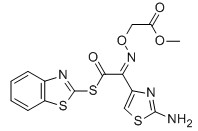 |
For Cefixime |
|
EHATA CAS No: 64485-82-1 Purity: ≥98% |
 |
For Ceftazidine |
|
2-Chloroadenine CAS No: 1839-18-5 |
 |
For Cladribine, Fludarabine et al |
|
Bicyclo(2,2,1)Heptane-2,3-di-exo-carboximide CAS No: 14805o-29-9 |
 |
For Lurasidne |
|
(R,R)-1,2-Bis(methanesulfonyloxy methyl)Cyclohexane CAS No: 186204-35-3 |
 |
For Lurasidone |
|
3-(Piperazin-1-yl)benzol[d] isothiazole CAS No: 87691-87-0 |
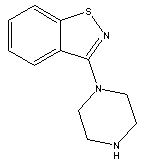 |
For Lurasidone |
|
Trityl olmesartan CAS No: 144690-92-6 Purity: ≥98% |
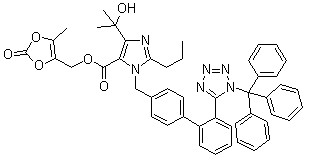
|
For olmesartan |
|
3-Acetyl Pyridine CAS No: 350-03-8 |

|
For Risedronate Sodium |
|
3-(AceticAcid)pyridine HCL CAS No: 6419-36-9 |
 |
For Risedronate Sodium |
|
Risedronic Acid CAS No: 105462-24-6 |
 |
For Risedronate Sodium |
|
3-Hydroxy-1-adamantyl-D-Glycine CAS No: 709031-29-8 |
 |
For Saxagliptin |
|
(1s,3s,5s)-3-(aminocarbonyl)-2-azabicyclo(3,1,0) hexane-2-carboxylic acid tert-butyl ester CAS No: 361440-67-7 |
 |
For Saxagliptin |
|
(S)-N-Boc-3- hydroxy-adamantylglycine CAS No: 361442-00-4 |
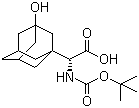 |
For Saxagliptin |
|
2-Azabicyclo[3.1.0] hexane-3-carbonitrile, (1s,3s,5s)- CAS No: 866083-42-3 |
 |
For Saxagliptin |
|
Ethyl 3-(pyridin-2-ylamino) propanoate CAS No: 103041-38-9 |
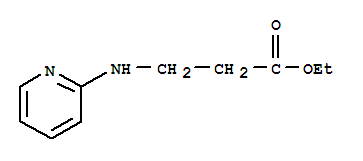 |
For Dabigatran |
|
N-(4-Cyanophenyl) glycine CAS No: 42288-26-6 |
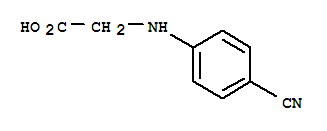 |
For Dabigatran |
|
4-methylamino-3-nitrobenzoic Acid CAS No: 41263-74-5 |
 |
For Dabigatran |
|
S-3-Amino-3-phenylpropanoic acid ethyl ester HCL CAS No: 167834-24-4 |
 |
For Dapoxetine |
|
(S)-3-Amino-3-Phemylpropan -1-ol CAS No: 82769-76-4 |
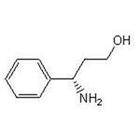
|
For Dapoxetine |
|
(S)-3-Dimethylamino-3-Phemylpropanol CAS No: 82769-75-3 |

|
For Dapoxetine |
|
4-{4-[4-(hydroxydiphenylmethyl)-1-piperidinyl]-1-butynil}-α,α-dimethyl benzene acetic acid CAS No: 832088-68-3 |
For Fexofenadine HCl | |
|
Methyl 2-(4-(4-chlorobutanoyl)phenyl)-2-methylpropanoate CAS No:154477-54-0 |

|
For Fexofenadine HCl |
|
5-Bromo-2-chlorophenyl)(4-ethoxyphenyl)methanone CAS No 461432-22-4 |

|
For Dapagliflozin |
|
4-(5-Bromo-2-chlorobenzyl)phenyl ethyl ether CAS No :461432-23-5 |
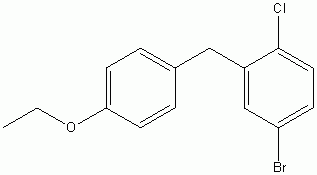
|
For Dapagliflozin |
Mica Ester,Pharma Intermediates,Ciprofloxacin Hcl Uses,Active Pharmaceutical Ingredients
NINGBO VOICE BIOCHEMIC CO. LTD , https://www.medicine-voice.com